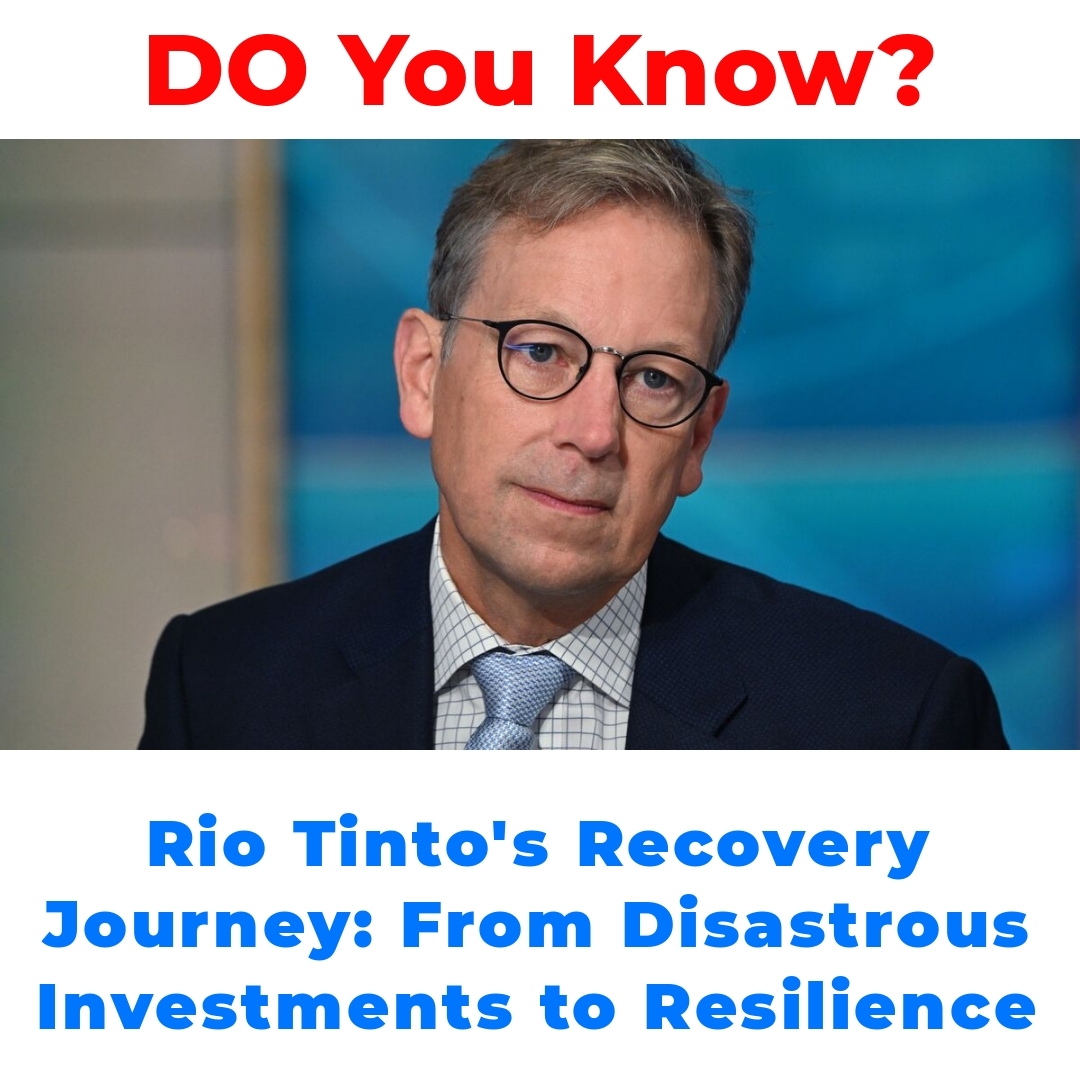Rio Tinto Group, a major player in the mining industry, faced significant challenges with its investment decisions over the past decade. Analyzing these past strategies helps to uncover lessons on the impact of disastrous investments, particularly in the aluminum industry and coal mining sectors, amid fluctuating market conditions.


The Commodities Boom and Rio Tinto’s Investment Decisions
In the early 2000s, the commodities boom was in full swing, creating a landscape ripe for investment opportunities. Mining companies, including the Rio Tinto Group, were optimistic about expanding their portfolios. This optimism, however, came with immense pressure to acquire and merge with other firms to maintain competitiveness and leverage rising commodity prices. It was a time when the rush to capitalize on growth led many firms, including Rio Tinto, to take bold risks.
Investors saw potential for high returns, but that pressure often distracted from necessary caution and strategic assessment. Understanding this context helps us to appreciate the subsequent investment decisions made by Rio Tinto and the impact of disastrous investments on the company in the following years.
The Ill-Fated Acquisition of Alcan Inc.
A. Background of Alcan Inc. and the Aluminum Industry
Alcan Inc. was a powerhouse in the aluminum industry and had a significant market position. With aluminum demand rising, Rio Tinto Group viewed Alcan as a prime target for acquisition. In 2007, they made a bold move to acquire Alcan for an impressive $38 billion, banking on the belief that this would keep them at the forefront of the aluminum industry.
B. Consequences of the Alcan Acquisition
Initially, things looked promising. The acquisition provided a boost, allowing Rio Tinto to increase its production capabilities. However, the benefits were short-lived. Market conditions shifted, and the anticipated growth did not materialize. As a result, Rio Tinto faced substantial financial writedowns, which marked the beginning of long-term challenges that would haunt them for years to come.
This drastic shift from optimistic forecasts to harsh realities demonstrates the importance of understanding market cycles.
The Riversdale Mining Ltd. Debacle
A. Overview of Riversdale Mining Ltd. and Its Coal Assets
In addition to the Alcan acquisition, Rio Tinto set their sights on Riversdale Mining Ltd., a company known for its coal assets in Mozambique. The initial excitement around Mozambique’s mining potential led Rio Tinto to invest heavily in Riversdale, hoping to capitalize on the booming demand for coal.
B. Poor Strategic Alignment and Market Downturn
Unfortunately, the timing couldn’t have been worse. The coal sector began experiencing a significant market downturn, and Rio Tinto found itself facing a steep decline in revenues. The poor strategic alignment, combined with this downturn, had a far-reaching impact on Rio Tinto’s financial performance and reputation.
Investors began to question the management’s ability to navigate through these turbulent waters, raising alarms about the company’s overall strategy and direction.
Corporate Management Changes and Their Impact
Following these failed investments, corporate management at Rio Tinto experienced drastic changes. Top managers who spearheaded these disastrous investments were pushed out, signaling a shift in leadership and a fresh approach to overseeing the company’s strategies.
These leadership changes had implications not just for internal company dynamics but also for future investment strategies, guiding Rio Tinto towards a more cautious and analytical approach as they aimed to rebuild their reputation and financial stability.
Lessons from Rio Tinto’s Investment Failures
A. The Importance of Strategic Assessment
One of the key takeaways from Rio Tinto’s past investment struggles is the undeniable importance of rigorous due diligence in acquisitions. Companies must thoroughly evaluate potential investments, considering market conditions and the long-term sustainability of those moves.
B. Understanding Market Cycles and Financial Health
Investors should always have a firm grasp of market cycles. The commodities boom brought immense opportunities, but recognizing the potential pitfalls is equally essential. Rio Tinto’s experience underscores the need for a comprehensive understanding of the broader economic climate, especially in volatile sectors like the aluminum industry and coal mining.
C. Long-Term vs. Short-Term Gains
Lastly, Rio Tinto’s journey highlights the distinction between chasing short-term gains and pursuing sustainable growth. While the pressure to perform in the moment is immense, prioritizing long-term stability often leads to far more successful outcomes.
Conclusion
In summary, the impact of disastrous investments on Rio Tinto Group offers critical insights for today’s investors. The lessons learned from their experiences with Alcan Inc. and Riversdale Mining Ltd. reveal the necessity of strategic foresight when navigating the complexities of the commodities industry.
Understanding these dynamics remains vital in today’s market, ensuring investors avoid the same pitfalls while striving for sustainable and long-term growth. By keeping these lessons at the forefront, companies can better navigate the intricacies of investment strategies and ultimately thrive in a challenging industry landscape.
Frequently Asked Questions
What triggered the commodities boom in the early 2000s?
The commodities boom in the early 2000s was fueled by rising demand for natural resources, leading to increased commodity prices. This created a strong investment climate for mining companies, including Rio Tinto.
Why did Rio Tinto acquire Alcan Inc.?
Rio Tinto acquired Alcan Inc. in 2007 for $38 billion, believing that this acquisition would position them as a leader in the aluminum industry and enhance their production capabilities amidst increasing demand.
What were the consequences of the Alcan acquisition for Rio Tinto?
Initially, the acquisition seemed beneficial, but market conditions changed, and Rio Tinto faced significant financial writedowns due to lower demand. This led to long-term financial challenges and a decline in the company’s reputation.
What went wrong with the investment in Riversdale Mining Ltd.?
Rio Tinto invested heavily in Riversdale Mining Ltd. due to the anticipated demand for coal. However, a market downturn severely impacted revenues, highlighting poor strategic alignment and causing further reputational damage.
What changes occurred in Rio Tinto’s corporate management after these investments?
Following the challenges faced with the Alcan and Riversdale investments, Rio Tinto underwent significant management changes, removing top executives responsible for the failed investments and shifting towards a more cautious investment strategy.
What key lessons can be learned from Rio Tinto’s investment experiences?
- Importance of Strategic Assessment: Rigorous due diligence is crucial for evaluating potential investments.
- Understanding Market Cycles: Investors should be aware of market fluctuations to make informed decisions.
- Long-Term vs. Short-Term Gains: Prioritizing sustained growth over immediate returns can lead to better outcomes.
How can today’s investors avoid the pitfalls experienced by Rio Tinto?
Investors should prioritize thorough research and analysis before making investment decisions, be mindful of market conditions, and focus on sustainable growth strategies to navigate the complexities of the commodities sector.







